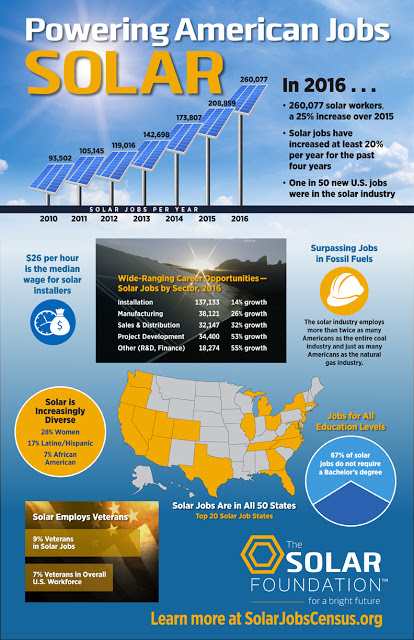
by jboullion | Mar 22, 2017 | Uncategorized
Last night Madison’s Common Council unanimously approved a resolution establishing a goal of
100% renewable energy use and net zero carbon emissions community wide by a date to be specified. The same resolution authorizes city staff to spend up to $250,000 on an independent consultant to analyze different timelines and measures for transitioning the city’s buildings and transportation fleets to becoming net carbon-neutral. With the benefit of that analysis, city staff will present a plan to the Common Council for achieving these objectives by January 2018.
With this action, Madison is on track to join 23 other U.S. municipalities and cities–among them Grand Rapids, Michigan, and Rochester, Minnesota—committed to a full transition to renewable energy for its own operations. It is also the first Wisconsin municipality to commit to achieving a net zero carbon footprint.
According to Wikipedia, carbon neutrality, or having a net zero carbon footprint, refers to achieving net zero carbon emissions by balancing a measured amount of carbon released with an equivalent amount sequestered or offset, or buying enough carbon credits to make up the difference. It is used in the context of carbon dioxide releasing processes associated with transportation, energy production, and industrial processes such as production of carbon neutral fuel.
The Sustainable Madison Committee (SMC), an official city body that meets monthly, spearheaded the changes to the city’s climate and energy goals. While these are the official goals for both the City of Madison and the broader community, the resolution directs City staff to address its own operations first for the purposes of leading by example. Stating that the “attainment of the goal is a budgetary and managerial priority,” the resolution requires the plan to include “interim milestones, budget estimates, and estimated financial impacts.”
City staff plans to issue a Request for Proposals for third-party expertise in May and hire a contractor in July.
Madison’s decision to initiate a process for weaning itself off fossil fuels reflects the widening divide between municipalities and states over climate change. Frustrated by a polarized political environment and inaction at higher levels of government, cities are increasingly striking out on their own to adopt and implement clean energy policies that build in resilience, economic opportunity, and operational savings while improving air quality and slowing climate change.
On that theme the Wisconsin Academy of Sciences, Arts and Letters and partners will convene a full-day summit to empower local Wisconsin leaders to advance energy efficiency, renewable energy, and resilience across the state. The summit, titled How do we build resilient communities in Wisconsin?, set for April 5th in Fond du Lac, will include a panel showcasing the vanguard of local leadership on clean energy and resilience. For more information and to register for the summit, visit the website here.
Other links:
Wisconsin State Journal article
Channel 3 WISC-TV editorial
Midwest Energy News article
An excellent summary of the public engagement process that led to the resolution as well as the city’s expectations going forward can be found in the statement prepared by Raj Shukla, Chair of the Madison Sustainable Committee, supporting Council adoption of the resolution.
+++++++++++++++++++++++++++++++++++++++++++++++++++++
My name is Raj Shukla, Chair of the Sustainable Madison Committee and a father who is proud to live in a city that takes action on climate change not only for the future of our world, but for the health of our community right now.
By way of background, at the direction of the Common Council, the Sustainable Madison Committee undertook a series of public working sessions seeking to update community-wide goals on carbon emissions and renewable energy. From July through November, a work group of SMC members considered a range of information, received advice from experts, and weighed ideas from the public.
In the end, advances to our understanding of climate science and leaps forwards in technology led workgroup members to a clear conclusion: Madison should set its sights on 100% renewable, net-zero carbon energy.
The resolution before you does a few big things:
1. Establishes a communitywide goal of 100% renewable, net zero carbon energy;
2. Insists that city government lead the way and reallocate money for city agencies to start; and
3. Provides a framework through which we’ll regularly assess and report on our progress.
We did not set a timeline for reaching these ambitious objectives within the resolution. To do so across the community reaches far beyond what city government can control. Energy policy is governed by state law and state regulators.
But city government can control how it operates, and this resolution empowers city staff to develop a plan—including target dates—for achieving 100% renewable, net-zero carbon goals for operations. Progress reports are built into the resolution and will keep us on track to meet community standards.
The vote you cast tonight is the culmination of eight months of community discourse and community leadership. But it is really just the beginning.
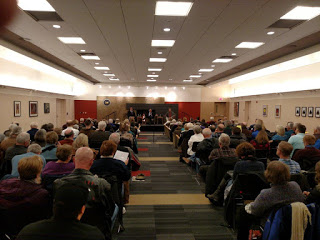
by jboullion | Mar 9, 2017 | Uncategorized
 RENEW’s Michael Vickerman joined Alex Bozmoski of RepublicEn, a right-leaning think tank housed in George Mason University, and WUWM reporter Susan Bence in a
RENEW’s Michael Vickerman joined Alex Bozmoski of RepublicEn, a right-leaning think tank housed in George Mason University, and WUWM reporter Susan Bence in a
lively exchange on the prospects for expanding clean energy and
confronting climate change in the new Trump administration. Bence’s
article, titled “Two Takes on Tackling Climate Change,” is now online, along with the interview that aired last week.
The radio show, taped on February 23rd, was one of three conversations that day organized by Douglas Savage of the UW-Milwaukee Institute of World Affairs. Savage directs the Institute’s Fireside Forum series, which this year is titled “Wisconsin and the World in the Trump Era.” Savage invited Vickerman and Bozmoski to continue the conversation in a WMTV-Channel 36 interview (air date TBD) and in an evening in-person forum at the UWM Student Union, which drew more than 100 attendees.
A good part of all three discussions revolved around the efficacy of and prospects for a federal carbon fee and dividend, a policy proposal supported by RepublicEn as an alternative to the Clean Energy Plan, the Obama Administration’s signature climate change policy initiative. Bozmoski details this policy in an Op-Ed he wrote for the Milwaukee Journal Sentinel.
Vickerman pointed out that the economic case for clean energy has become very compelling in recent years, and will continue to become more mainstream regardless of how the Clean Power Plan or a carbon tax fares under a Trump administration.
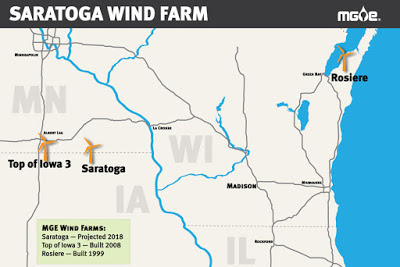
by jboullion | Feb 22, 2017 | Uncategorized
An article on Madison Gas & Electric’s announcement to build, own, and operate a 66 megawatt wind farm in Saratoga, Iowa appeared in today’s Wisconsin State Journal.
Excerpt from the article below: “Tyler Huebner, executive director of the Madison renewable energy advocacy nonprofit RENEW Wisconsin, praised MGE’s Saratoga project. ‘We’re happy to see MGE move ahead on their Energy 2030 framework and identify a large, renewable energy project,’ he said.”
MGE plans $107 million wind farm in northeast Iowa
 Madison Gas & Electric plans to build a wind farm in northeast Iowa that could generate up to 66 megawatts of electricity, enough to power about 47,000 homes.
Madison Gas & Electric plans to build a wind farm in northeast Iowa that could generate up to 66 megawatts of electricity, enough to power about 47,000 homes.
The Madison utility company said Tuesday the Saratoga wind farm in Howard County, Iowa, would consist of 33 turbines, each nearly 500 feet tall. That’s 100 feet taller than turbines at MGE’s Top of Iowa wind farm in Worth County, in north-central Iowa, installed in 2008.
If regulators approve the proposal, it will be built next year and will begin operating by the end of 2018. The estimated cost is $107 million.
“This is an exciting opportunity for our customers and continues the progress we’ve made in reducing carbon emissions and increasing renewable energy,” Gary Wolter, MGE chairman, president and CEO, said in a written statement. “With recent advances in technology, this project represents a long-term, cost-effective strategy for MGE to continue to transition to cleaner energy sources.”
The announcement came one week before Wolter is slated to retire as president and CEO, to be succeeded by Jeffrey Keebler, senior vice president of energy supply and planning, on March 1.
Wolter will remain chairman of the boards of MGE and parent firm MGE Energy.
Tyler Huebner, executive director of the Madison renewable energy advocacy nonprofit RENEW Wisconsin, praised MGE’s Saratoga project. “We’re happy to see MGE move ahead on their Energy 2030 framework and identify a large, renewable energy project,” he said.
Huebner was not surprised about the Iowa location. “Right now, southwest Wisconsin is a little transmission-constrained. That is hurting the ability to develop wind power (in Wisconsin),” he said.
The Sierra Club also is glad to see MGE “taking the much needed initiative to invest in wind power,” said spokeswoman Elizabeth Katt Reinders, in Madison. “We’d like to see MGE commit to large-scale clean energy investment with the goal of replacing, not augmenting, dirty fossil fuels.”
In its Energy 2030 plan, released in November 2015, MGE said it plans to supply 25 percent of its electric sales from renewable resources by 2025 and 30 percent by 2030.
MGE said it started searching for sites for a wind farm in summer 2015. It began negotiations for the northeast Iowa site in summer 2016 and obtained rights to the location last year from initial site developer RPM Access.
If approved, it will be MGE’s largest wind farm. The utility also gets wind-generated power from five other farms in Wisconsin and Iowa.
Tuesday’s announcement about the Saratoga project comes on the heels of a meeting held Monday night by RePower Madison, a citizen group formed in 2014 to oppose MGE’s rate increase plans.
About 100 people attended the session at the Madison Central Library at which RePower Madison encouraged residents to send postcards to the utility calling for MGE to commit to 100 percent renewable energy.
RePower program manager Mitch Brey said the timing of MGE’s Saratoga announcement could be more than coincidental, though the project has been in the works for a while.
“We hope this will be the first of many clean energy projects for MGE’s incoming CEO, Jeffrey Keebler, and that he will embrace a goal of 100 percent renewable energy as he takes on his new leadership role,” Brey said.
The MGE proposal is the latest in a series of wind generation projects announced in the past year. Alliant Energy, Madison, will build at least 500 megawatts in Iowa by 2020 and Dairyland Power Cooperative, La Crosse, said it will buy power from a wind farm under construction near Platteville and another, already operating, in north-central Iowa.
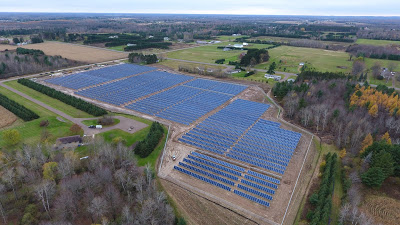
by jboullion | Feb 15, 2017 | Uncategorized
RENEW’s Michael Vickerman wrote a piece for today’s Midwest Energy News on the growth of solar in Wisconsin, and why investor-owned utilities should follow the leadership of co-ops and residents:
By: Michael Vickerman, RENEW Wisconsin Policy & Program Director
 |
One of the Dairyland Power Cooperative arrays at
Taylor Electric Cooperative in Medford, WI. |
For solar energy in Wisconsin, the last 24 months have been nothing short of electrifying. After the best-year-ever in 2015 led by installations on businesses and homes, 2016 started with a jolt when La Crosse-based Dairyland Power Cooperative committed to 14 large projects scattered across the full length of western Wisconsin. About half of these projects will be fully operational by the end of February, and the remainder before July.
Projects by Alliant Energy, Bayfield Electric Cooperative and Madison Gas & Electric delivered the next pulse of sun-generated power. Their installations span the state from Iron River near Lake Superior in the north to Beloit by the Illinois border in the south.
Large arrays placed on 16 Wisconsin stores owned by national retailer Target also contributed to the ongoing surge of solar generation. Located principally in southeast Wisconsin, Target’s rooftop systems encompass the largest customer commitment to solar energy to date in the Badger State.
When the final project in this wave is energized this spring, Wisconsin’s solar portfolio will stand at 60 megawatts (MW), producing enough electricity to supply 7,000 households each year. A year ago that number was only 25 MW.
Notwithstanding Target’s remarkable initiative, Wisconsin electric providers have accounted for most of this recent growth, driven primarily by cooperatives responding to the desires of their owner-members. As impressive as these numbers appear to be, however, a comparison between our solar marketplace and those of the other 49 states places Wisconsin in 34th place, behind our Midwestern neighbors Minnesota, Iowa, and Indiana.
Given Wisconsin’s second-division status in this area, it came as a shock to many when WPPI Energy and NextEra Energy Resources announced plans in late January to jointly pursue a 100 MW solar power plant adjacent to the Point Beach nuclear plant north of Manitowoc. As presently planned, NextEra’s project would supply WPPI’s 51 member municipal utilities with clean electricity under a 20-year contract beginning in 2021.
A recently completed NextEra Energy solar project of similar size provides a glimpse into the economic benefits we anticipate from the Point Beach solar project. Located in Alabama, the River Bend plant, which supplies electricity to the Tennessee Valley Authority, created about 350 jobs during construction, with most of the workers coming from the local area.
In addition to being a job generator, River Bend will provide tax payments for schools and local services adding up to nearly $10 million over the life of its current contract. So too will the Point Beach solar project, to the tune of $400,000 per year while producing safe, clean, and renewable electricity for municipalities like nearby Two Rivers.
The Point Beach announcement highlights another positive attribute of solar power in Wisconsin, which is that our state has an abundance of locations well-suited to accommodating large projects, including brownfield sites such as the former Kewaunee nuclear station now undergoing decommissioning. Closed since 2013, Kewaunee is a mere 15 miles away from Point Beach, and has the infrastructure in place to host a similar-size installation. Local officials should take a cue from WPPI’s action and press Dominion Energy, Kewaunee’s owner, to explore re-energizing the 900-acre site with solar power.
Indeed, nothing demonstrates the cost-effectiveness and low-risk nature of a generation source as emphatically as a 20-year power purchase contract. Now that it has become cost-competitive with new wind and natural gas generators, shouldn’t solar power be the default resource going forward with all Wisconsin utilities?
It’s worth remembering that Dairyland and WPPI are unregulated power suppliers and as such do not need approval from state regulators to pursue large-scale solar for their members. But Wisconsin’s largest power providers are investor-owned utilities, and do not have the same latitude. They need approval from the Public Service Commission (PSC) to build solar projects of any size for their ratepaying customers. PSC Chairwoman Ellen Nowak recently stated, “Right now, there’s not a need for a lot a new generation of any source in Wisconsin,” indicating investor-owned utility-scale solar proposals may encounter tougher sledding.
While suppliers for municipal and cooperative electricity providers can go big on solar power today, investor-owned utilities have yet to come up with a strategy for persuading the PSC why large-scale solar is needed and is in the best interests of all ratepayers. And until they do, they will remain largely bystanders to this build-out, hampered in their ability to pursue installations apart from the occasional shared solar array or demonstration project.
Now is the time for Wisconsin’s larger investor-owned utilities to capitalize on the solar leadership of Dairyland Power Cooperative and WPPI Energy. While the solar development we have today is creating jobs and helping businesses manage their energy costs and compete for new customers, it can do so much more for Wisconsin.
For years, organizations like ours have been presenting the public policy case for solar energy, with modest success. But if the state’s largest utilities decided to make the case for an expanded build-out based on simple economics, the chances of convincing policymakers will improve dramatically.
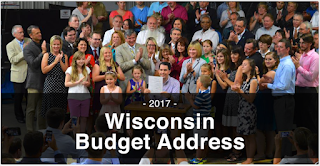
by jboullion | Feb 9, 2017 | Uncategorized
On Wednesday, February 8th, Wisconsin Governor Scott Walker issued his Executive Budget for 2017 thru 2019. Below, we list the clean energy related provisions that RENEW has found in the document. If more items or information is identified, we will add it as we become aware.
 |
| Screenshot via https://walker.wi.gov/wiworking |
From a process perspective, the Budget will head to the Legislature’s Joint Finance Committee, where hearings will be held throughout the spring. The full Legislature will vote on the Budget in early summer.
There are three documents where these items are located:
Please
email Tyler if any of these items are of particular importance to you or your business. We are continuing to gather information about these items and appreciate your input.
Here we go:
Renewable Energy Appropriation for State Agencies
The Governor has proposed segmenting the $5,237,700 annually spent for state agencies to purchase renewable energy. Currently, the Department of Administration handles these purchases, and the Governor has proposed that the agencies involved should instead have their own budgets to make these purchases. These agencies include Departments of Corrections, Health Services, Public Instruction, Veterans Affairs, and University of Wisconsin System.
Schools Energy Efficiency
The Governor has proposed to prohibit any new increases in school district revenue limits for energy efficiency and renewable energy projects. School districts would still have the ability to use referenda for these projects. Commonly referred to as “Act 32” in the energy circle, this provision allows school districts to spend money above their revenue limits if the funds are spent on qualified energy efficiency and renewable energy improvements that reduce energy and operational expenditures.
The “Budget in Brief” frames this in the following way: “Mitigate property tax increases by eliminating the energy efficiency exemption in revenue limits on a going-forward basis. Property tax levies associated with the exemption grew 115 percent in last three years and in calendar year 2016 alone, districts obtained authorization to spend $327,052,400 above revenue caps. School districts will continue to have the ability to use referenda for these projects.”
In what may be seen as a trade-off, the Governor has proposed that up to $10 million of Focus on Energy’s annual budget for each year be spent on schools energy efficiency. The “Budget in Brief” describes this further: “Allocate up to an additional $10,000,000 from Focus on Energy funds annually or up to $20,000,000 over the biennium for elementary, secondary, and postsecondary schools in the Focus on Energy program for energy efficiency projects, and prioritize the funding to public elementary and secondary schools.”
“Intervenor Compensation”
This is a budget for organizations such as RENEW Wisconsin, Citizens Utility Board, and others to utilize and bring expert witnesses and legal support to cases at the Public Service Commission. Cases may include utility rate cases, the construction of new power plants or transmission lines, and additional proceedings.
The Governor has proposed to allocate an $742,500 annually for both years of this budget. This line item was cut to from over $1 million annually down to $371,000 per year in the previous state budget. Adding funds for intervenor compensation is a good thing to ensure complete cases and evidence are presented to the Commission for their decision-making.
Settlement Funds from Volkswagen into Clean Transportation
“Through the class action settlement resulting from Volkswagen, settlement funds received by the state will be redirected to replacing aging, inefficient vehicles with clean-powered vehicles, ensuring additional protections of the state’s air quality.” The Governor proposes to “allocate $42,000,000 of Volkswagen emissions settlement funds expected to be received by the state in the 2017-19 biennium for the replacement of older vehicles with new, lower emission vehicles. Through consultation with Milwaukee County, the state will provide up to $26,000,000 of the settlement funds to the county to purchase new buses during the 2017-19 biennial budget. This will lower transit system emissions and target a majority of settlement funds toward a region deemed to be in need of air quality improvement. In return, the county will repay the state $1,950,000 per year for a ten-year period. The remaining $16,000,000 available during the 2017-19 biennium will be used to replace state-owned vehicles. “
Adopt State Version of Federal REINS Act
“Adopt state version of federal REINS Act by requiring the Legislature to approve all administrative regulations that have an impact of $10,000,000 or more on regulated individuals and entities. Provide for greater transparency of an administrative rule’s potential impact on businesses, local governmental units, and individuals by requiring, at Joint Committee Review of Administrative Rules’ (JCRAR) request, a preliminary hearing and comment period to allow for stakeholder feedback earlier in the process. In addition, allow an independent economic impact analysis of regulations at the request of Department of Administration or JCRAR. Provide a process for agencies to follow regarding guidance documents to ensure that public comment is considered. Additional modifications to the process include: require Department of Administration approval of economic impact analyses, changes to emergency rule extensions, an expedited process for repealing unauthorized rules, and sunset of rule-making authority for agencies that have not promulgated a rule in ten years or more.”
Reduction of Emergence Assistance Funds Used for Low-Income Weatherization
In the Budget Assembly Bill, we found that the low-income weatherization program will receive less money from the emergency assistance program by $1.4 million compared with the 2016-17 fiscal year. The text reads:
SECTION 903. 49.175 (1) (i) of the statutes is amended to read:
49.175 (1) (i) Emergency assistance. For emergency assistance under s. 49.138 and for transfer to the department of administration for low-income energy or weatherization assistance programs, $7,000,000 in each fiscal year (down from $8,500,000 in 2015-16 and $8,400,000 in fiscal year 2016-17).
Elimination of Inactive Boards, Councils or Commissions
The Governor recommends eliminating the Bioenergy Council, which last met prior to September 15, 2015. The Bioenergy Council was under the Department of Agriculture, Trade, and Consumer Protection.
Repeal the prevailing wage requirements for state construction projects.
This is listed under a set of “Government Reforms” in the budget in brief, and called out in the executive summary of the full budget document.
Sunset the Diesel Truck Idling Reduction Grant program on June 30, 2017, instead of
June 30, 2020, for savings of $1,000,000 SEG in fiscal year 2017-18 and $1,077,100 SEG, including 1.0 FTE position, in fiscal year 2018-19 or $2,077,100 SEG and 1.0 FTE position over the biennium.
Potentially related to Agriculture and Dairy Digesters:
Provide $825,000 SEG (segregated revenue) in fiscal year 2017-18 and $825,000 SEG in fiscal year 2018-19 for additional support in order to fully fund demand for cost- sharing nonpoint source abatement projects and other land and water conservation activities performed by counties. Total funding for the program will be set at $3,325,000 SEG, an increase of 24 percent over base level funding.
Direct the Department of Agriculture, Trade and Consumer Protection, and the Department of Natural Resources to conduct a study on the feasibility of transferring the permitting process for concentrated animal feeding operations from the Department of Natural Resources to the Department of Agriculture, Trade and Consumer Protection.
Eliminate the stray voltage program administered by the Public Service Commission and the Department of Agriculture, Trade and Consumer Protection, providing annual savings of $305,100 PR (program revenue), a reduction of 1.0 FTE position to the commission and a reduction of 5.0 FTE positions to the department. The sunset of the program also saves rural cooperatives over $25,000 annually through the elimination of fees. No claims have been awarded under the program for many years.
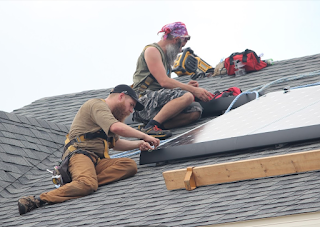
by jboullion | Feb 7, 2017 | Uncategorized
Immediate release
February 7, 2017
More information
Tyler Huebner, Executive Director
608.575.2201 (mobile)
tyler.huebner@renewwisconsin.org
 |
Workers from Madison-based Full Spectrum Solar
installing solar panels on a participating home
in the MadiSUN Group Purchase Program. |
Today, The Solar Foundation released the national and state-by-state results of its annual “Solar Jobs Census.”
Wisconsin’s solar industry employs 2,813 workers according to the Census, across installation, manufacturing, sales and distribution, project development, and related sector employment.
The Census reported 45% growth in Wisconsin solar over 2015 numbers (1,941 jobs), after showing little growth between 2014 and 2015.
Nationally, the industry saw 25% growth with over 260,000 Americans now working in the solar sector, up from 208,859 last year, and comprising the fourth consecutive year with more than 20% growth.
Wisconsin’s rankings amongst all states were largely unchanged. Wisconsin placed 26th nationally for both the number of solar jobs in the state (same as 2015), and 26th nationally in solar jobs per capita (up one spot from 27th last year).
The full report can be found at www.SolarJobsCensus.org, where national and state-by-state reports are located.
Additional key statistics include:
• The U.S. Solar Industry now employs twice as many Americans as the coal industry, and approximately as many as the natural gas industry
• One out of 50 new American jobs in 2016 was in the solar industry
• The national median wage for solar installers is $26 per hour
• Solar employs Veterans: 9% of the solar industry is comprised of Veterans, compared with 7% of the U.S. workforce
“Solar energy is a growth industry and it is outstanding to see Wisconsin-based businesses adding jobs to meet the demand for increased solar installations in Wisconsin and throughout the country,” said Tyler Huebner, RENEW Wisconsin’s Executive Director.
“But Wisconsin’s solar energy job growth potential has just begun to be tapped. Solar makes up less than 1% of Wisconsin’s electricity production. This growth industry could be propelled by improved policies to unlock its true potential, including fair compensation for grid-connected solar, clarity on third-party financing opportunities, and simplified procedures for connecting solar to the local utility grid,” concluded Huebner.







